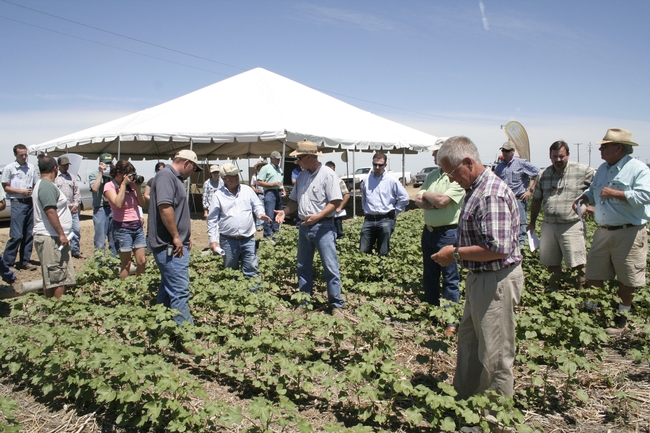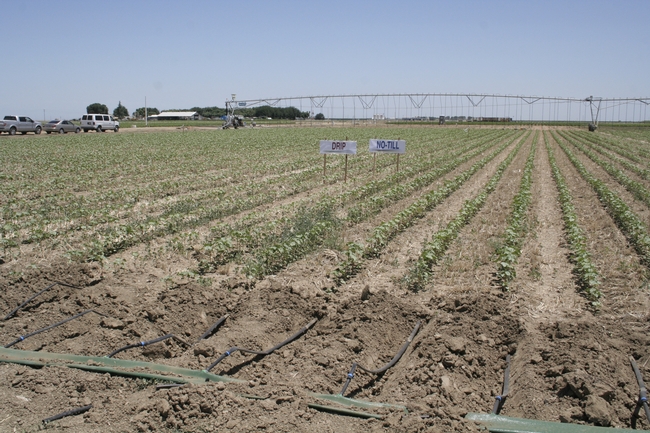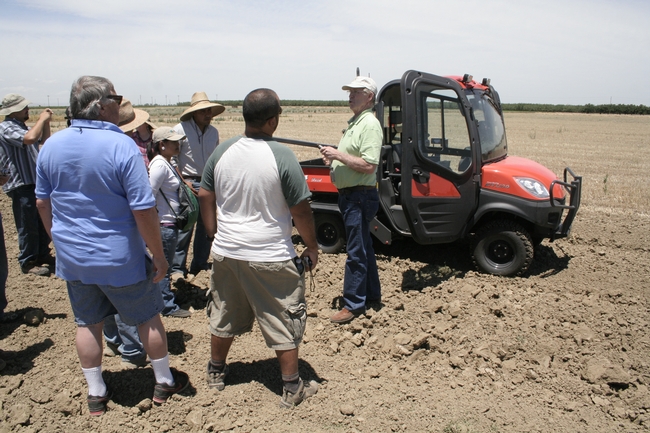- Author: Jeannette E. Warnert
The Conservation Tillage workgroup has initiated a long-term study that directly compares the use of subsurface drip irrigation and overhead irrigation in a diverse no-till crop rotation. The drip lines are buried 10 to 12 inches deep, which will allow the scientists to experiment with a number of different crops over the next 6 or 7 years.
"We're trying to look at the flexibility of flat planting, diversity in cropping and drip irrigation, which is becoming the standard in many crops, and comparing this with overhead, automated mechanized irrigation," said workgroup chair Jeff Mitchell, UC Cooperative Extension cropping systems specialist. "We want to study what the future is going to be."
Currently, nearly all the Central California acreage of processing tomatoes is drip irrigated; cotton, in contrast, is still mostly grown with furrow irrigation. An increasing amount of acreage is also being irrigated with overhead, mechanized irrigation systems in recent years. In addition to cotton and tomatoes, the researchers plan to grow onions, broccoli and wheat on the plots.
Farmers visited the site of the new research during a workgroup meeting June 28 at the UC West Side Research and Extension Center near Five Points. At the first stop, the researchers introduced growers to conservation tillage research that compares no-till cotton and tomatoes planted in the residue of cover crops with crops grown using standard practices. These plots are furrow irrigated.
Data about soil surface water evaporation, soil temperature variances, nutrient differences, weed management, plant growth and yield are being collected.
In addition to generating data about the use of conservation tillage in California production systems, the CT workgroup encourages farmers to try conservation tillage in their own operations.






